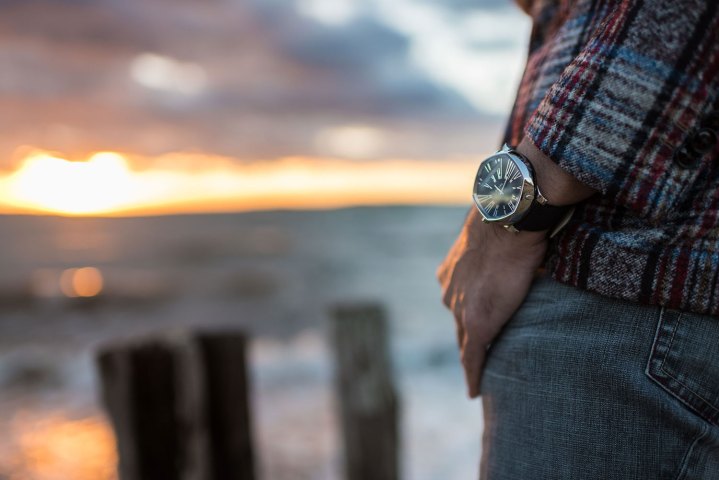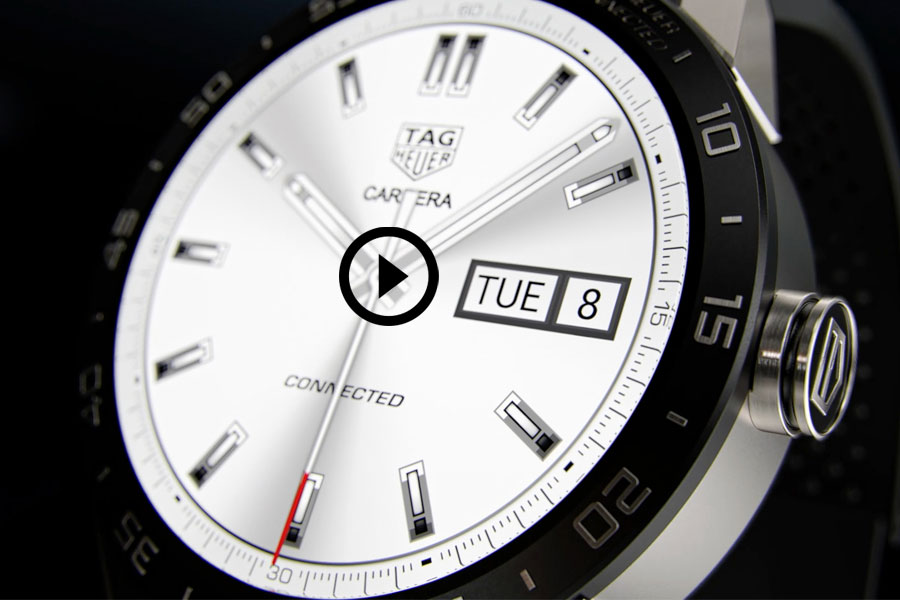
At CES in January, we saw a handful of new products, but aside from the unusual Casio WSD-F10, these were mostly bland fitness trackers with very few surprises. Things only got worse at Mobile World Congress in February. The show brought no new Android Wear watches at all, and just a few fitness bands from Garmin that were notable. Fitbit, for instance, didn’t even bother to attend.
It’s easier for a watch maker to become a smartwatch maker, than a tech company to produce desirable smartwatches.
Oddly, at the same time, watch-only companies like Switzerland’s MyKronoz showed products at the show and seemed to be thriving, despite a lower-tech approach that shuns the app-based concepts of Android Wear and other full-blown smartwatches.
What happened? The tech brands don’t know how to design attractive products; the Swiss watch makers don’t have the tech chops to jump in with two feet; and the smaller brands don’t have the R&D budgets to make super high-tech hardware. And all of them seem to quivering in the shadow of an even bigger threat: the Apple Watch 2.
It’s either Apple, or extreme simplicity
Smartwatches are selling … but mostly Apple’s. After only eight months on sale in 2015, the Apple Watch stole two-thirds of the total amount of smartwatches sold over the entire year. That’s despite it being one of the most expensive models you can buy, only one of several watches compatible with the iPhone, and being technically more complex to operate than watches from Pebble or other non-Android Wear brands.
According to both Guess Connect and MyKronoz, two of the few wearable brands showing off a range of new products at MWC, Apple’s competitors are missing the point by relying on complicated technology. Simplicity is what people are looking for; or at least, those who aren’t buying the Apple Watch.
“Tech giants are still overly focusing on features and the latest technology, instead of users’ real needs and expectations within a reasonable budget,” Sarah Segre, Marketing Manager for MyKronoz, told Digital Trends.

MyKronoz sells cross-platform compatible wearables that cost $45 to $220, and has recently reached the million sales mark.
“All of [the smartwatch makers] are fighting to implement as many sophisticated features as possible on their smartwatches,” added Boris Bault, CEO at MyKronoz. “It seems that they almost forget to bring real emotion and then to focus on an easy, understandable design which is the basic of a wearable device.”
Guess Connect saw a similar trend. “People want style and simplicity,” Elizabeth Thompson, Guess Connect product manager, told Digital Trends at Mobile World Congress. Neither Guess nor MyKronoz sells complicated wearables, and the major tech companies that do, like Sony, Acer, Asus, and LG (to name just a few) haven’t shown any new models in 2016. Meanwhile, Guess Connect has grown its range of connected watches from 5 to 20 in the last year, and had several new designs on display at MWC in February.
The Swiss are coming
Why aren’t we seeing more Android Wear-like watches? Major tech brands don’t really understand what people want from a smartwatch, have a clue how to design a good one, or how to advertise or market it when they do.
Tech giants are still overly focusing on features and the latest technology, instead of users’ real needs and expectations within a reasonable budget.”
The design of the Apple Watch is only passable, yet it dominates sales because it has an established retail presence, and the right industry partnerships. Samsung’s Gear S2 is better looking, but it’s more difficult to find. You can’t buy it with a Hermés strap from a Hermés boutique, or at a massive network of global Samsung stores.
That’s where the Swiss watch industry comes in. The most interesting new Android Wear watches of all have come from watch makers — the Fossil Q Founder and the TAG Heuer Carrera Connected. The two companies have the design chops, the retail presence, and the industry cache to attract buyers. The difference between putting on a Q Founder and the LG Watch Urbane is huge, and it’s difficult to imagine why anyone would buy the latter anymore.
Is the Swiss watch industry about to swoop in and wow us with beautiful designs, decent features, and real, actual passion for this type of product? Guess Connect’s Elizabeth Thompson said we may get the answer at the Baselworld watch show scheduled for March, where established watch firms are likely to show off more smartwatches. She believes the tech side of smartwatch design can be purchased — look at TAG Heuer’s partnership with Intel for proof — but a sense of style, clientele, and brand recognition takes decades to cultivate. In other words, she believes it’s easier for a watch maker to become a smartwatch maker, than a tech company to produce desirable smartwatches. Swatch-owned Tissot is one of the few to say it’s definitely going to the show with a smartwatch in Basel, while Veldt, a Japanese watch brand, will show the Serendipity smartwatch.
None of this has come quickly enough for Swiss brands, though. According to Strategy Analytics, smartwatches are already outselling Swiss watches, and have done so in an incredibly short amount of time. The company estimates smartwatch sales went from 1.9 million at the end of 2014 to 8.1 million at the close of 2015. Swiss watch sales closed at 7.9 million. Boastful TAG Heuer managed to take 1 percent of smartwatches shipped, which probably had more to do with the price tag than anything else.
Neil Mawston, Executive Director at Strategy Analytics, called the wearables industry “surprisingly healthy,” but isn’t convinced the Swiss brands will make a splash soon: “The Swiss watch industry has been very slow to react to the development of smartwatches, sticking its head in the sand and hoping smartwatches will go away.”
MyKronoz’s Segre had a similarly dim outlook, commenting on the work ahead for these companies. “Think about sales channel strategy and models. Will watch makers be willing to enter carrier stores, electronic stores, or big retailers where people currently purchase these new types of products? Or will they reinvent their own stores with dedicated merchandising, newly trained staff, and new marketing? Probably yes, but how long it will take them to get on the bandwagon?”
Who will stand atop the smartwatch?
MyKronoz and Guess Connect may talk like they’ve cracked the code for smartwatch success, but the truth is, they’re just playing a different game to Samsung, Apple, LG, and other tech brands, and another still from the Swiss watch makers. No company has solved wearables yet, or really come close.
However, the Apple Watch and its inevitable sequel looms large over them all, and takes considerable blame for the lull we’re experiencing now. Every tech company has hit pause while they decide what to do next, and all of them are secretly hoping Apple will give some direction to follow.
For Android Wear, Fossil and TAG Heuer have led the charge in 2016, but other names need to join in soon for smartwatch momentum to swing toward traditional watch makers. More partnerships need to be encouraged, too. The expertise to make a really exciting smartwatch is obviously split between the tech and watch makers.
If the Apple Watch 2 arrives in March, then it may set the tone for the rest of the year. If it doesn’t, then Apple won’t be too worried — no-one else is snapping at its heels … yet.






